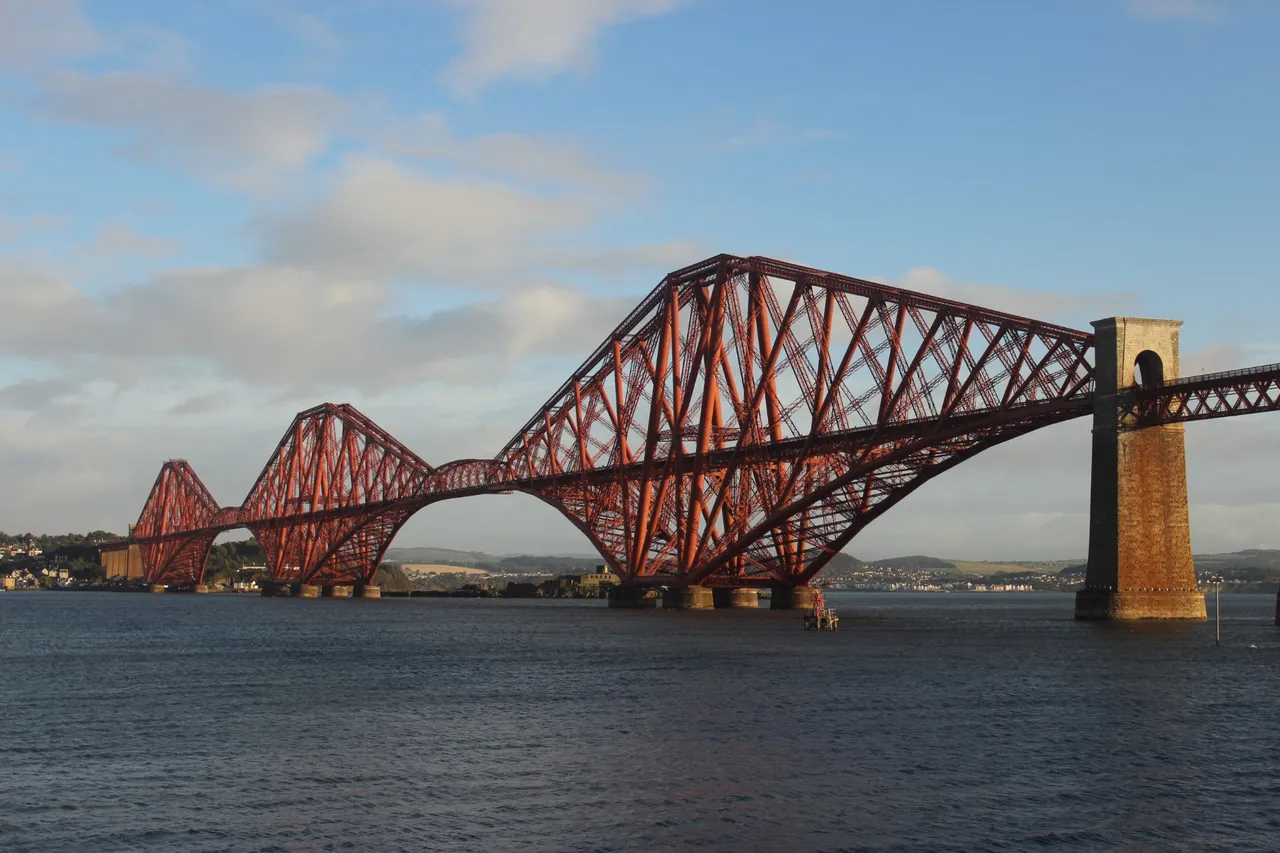
[ENG]
The destination of our last trip was Scotland, and the first point we visited after leaving Edinburgh airport was the Firth of Forth and the bridges over it.
While still in high school, I went to Edinburgh once a weekend, but unfortunately I did not leave the city limits then, so then I only found out about the existence of the monumental Forth Bridge, but I did not manage to see it then, but I wrote it in capital letters on my list of places to visit . Now fifteen years later when I have arrived in Scotland again, I could not miss such an opportunity.
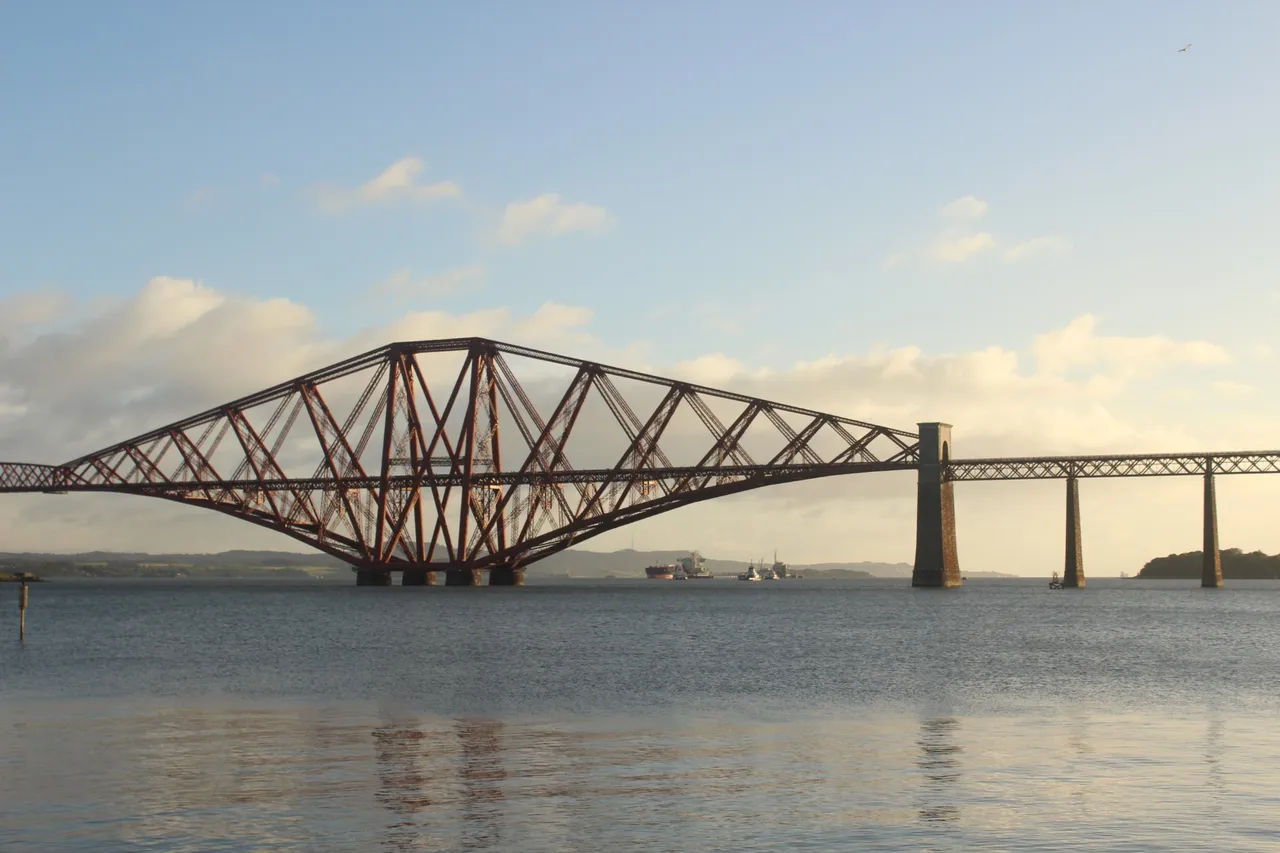
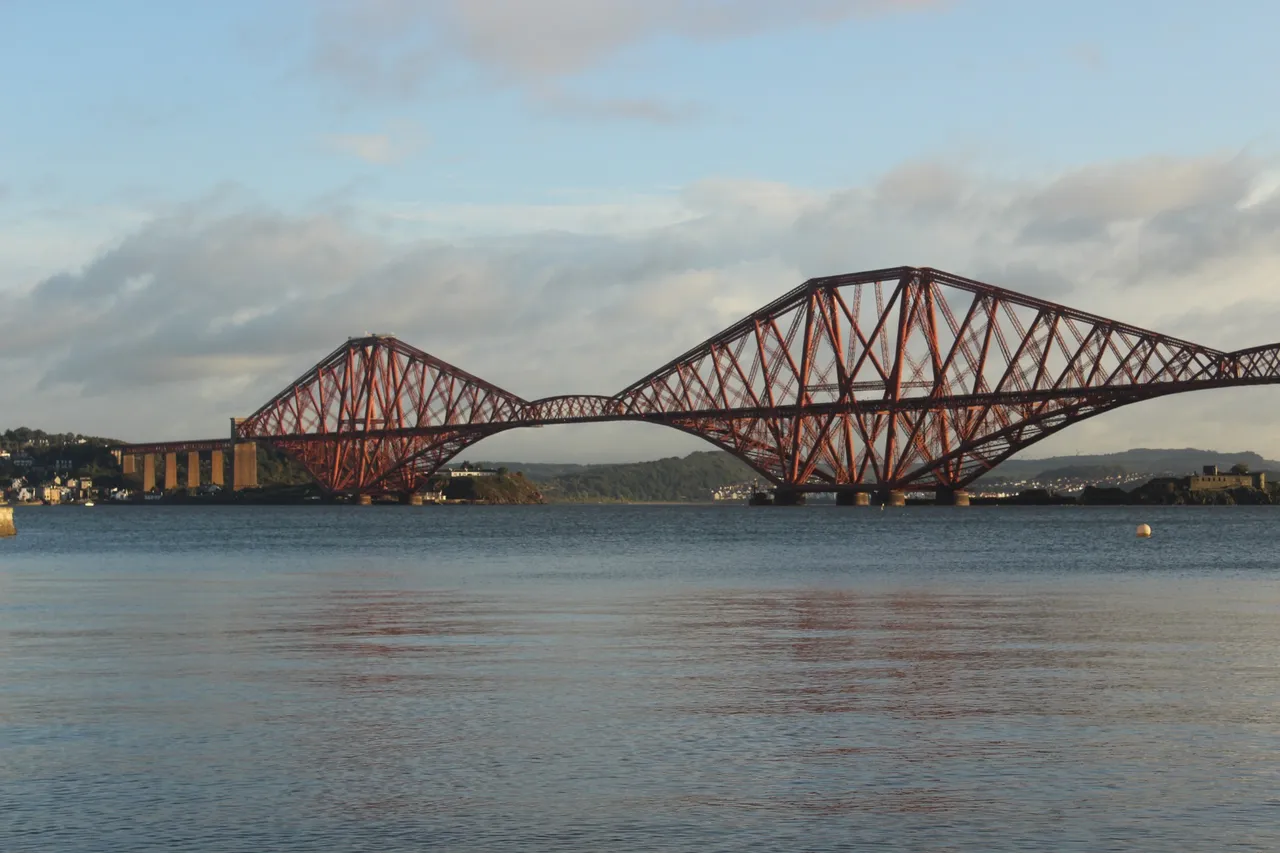
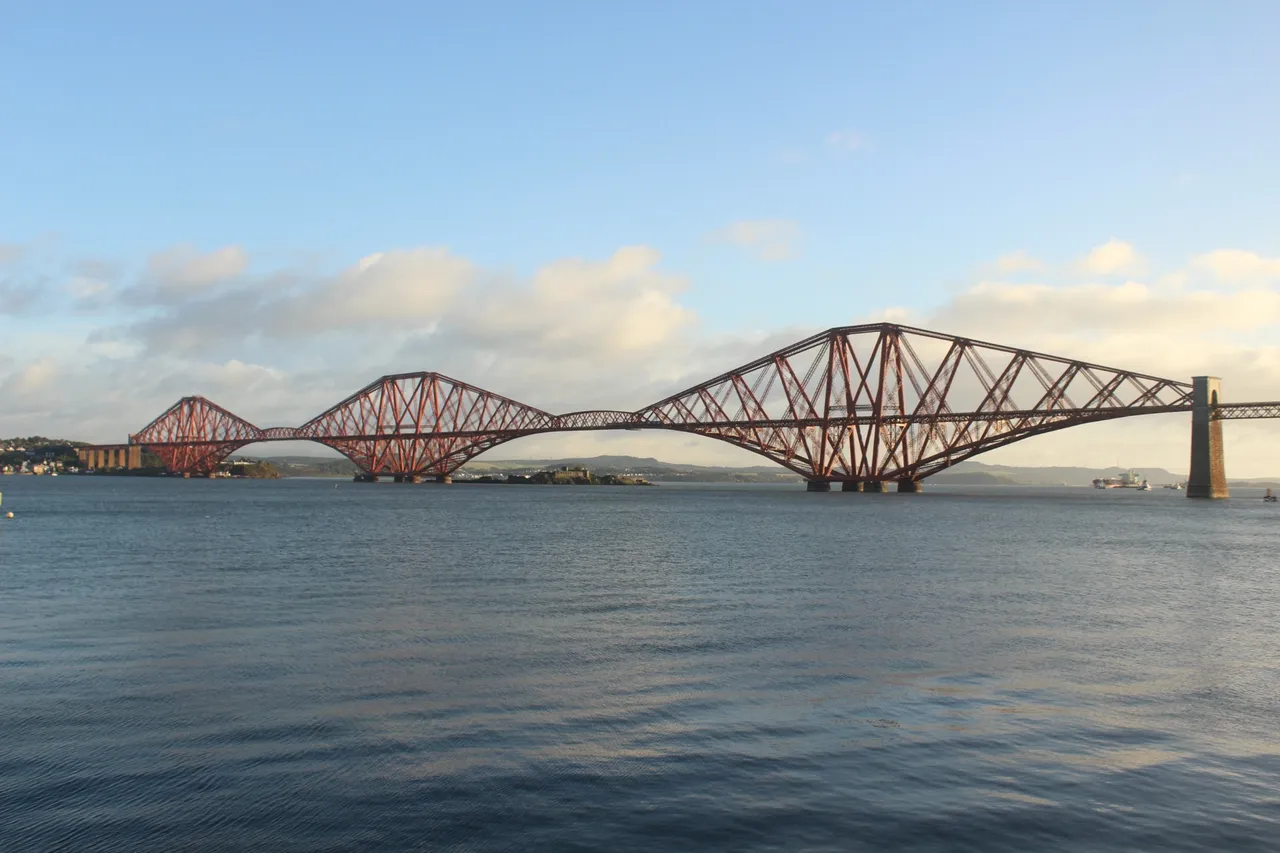
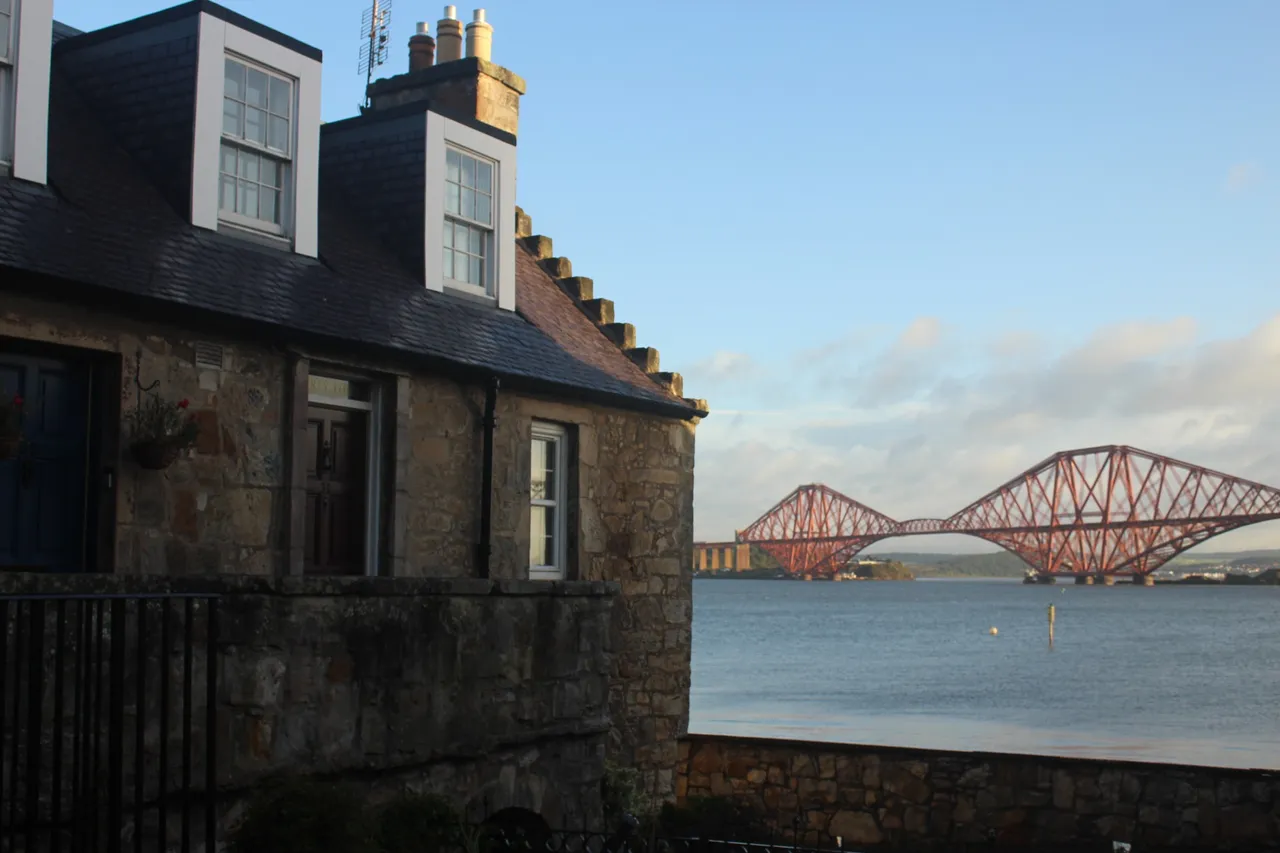
[PL]
Celem naszej ostatniej podróży była Szkocja, a jej pierwszym punktem jaki odwiedziliśmy po opuszczeniu lotniska w Edynburgu była zatoka Firth of Forth oraz znajdujące się nad nią mosty.
Będąc jeszcze w liceum pojechałem raz na weekend do Edynburga, ale niestety wówczas nie opuściłem granic miasta więc wówczas tylko się dowiedziałem o istnieniu monumentalnego mostu Forth Bridge, jednak nie udało mi się go wtedy zobaczyć, ale zapisałem go wielkimi literami na mojej liście miejsc wartych odwiedzenia. Teraz po piętnastu latach gdy znów przyleciałem do Szkocji nie mogłem odpuścić takiej okazji.
[ENG]
Three huge bridges cross the Scottish Firth of Forth. The first cantilevered steel railroad bridge dating from the 19th century, the Forth Road Bridge, dating from the 20th century, and another Queensferry Crossing suspension road bridge from the 21st century.
[PL]
Szkocką zatokę Firth of Forth przecinają 3 ogromne mosty. Pierwszy pochodzący z XIX wieku kolejowy most stalowy o konstrukcji wspornikowej Forth Bridge, Pochodzący z XX wieku drogowy most wiszący Forth Road Bridge i pochodzący z XXI wieku kolejny drogowy most podwieszany Queensferry Crossing.
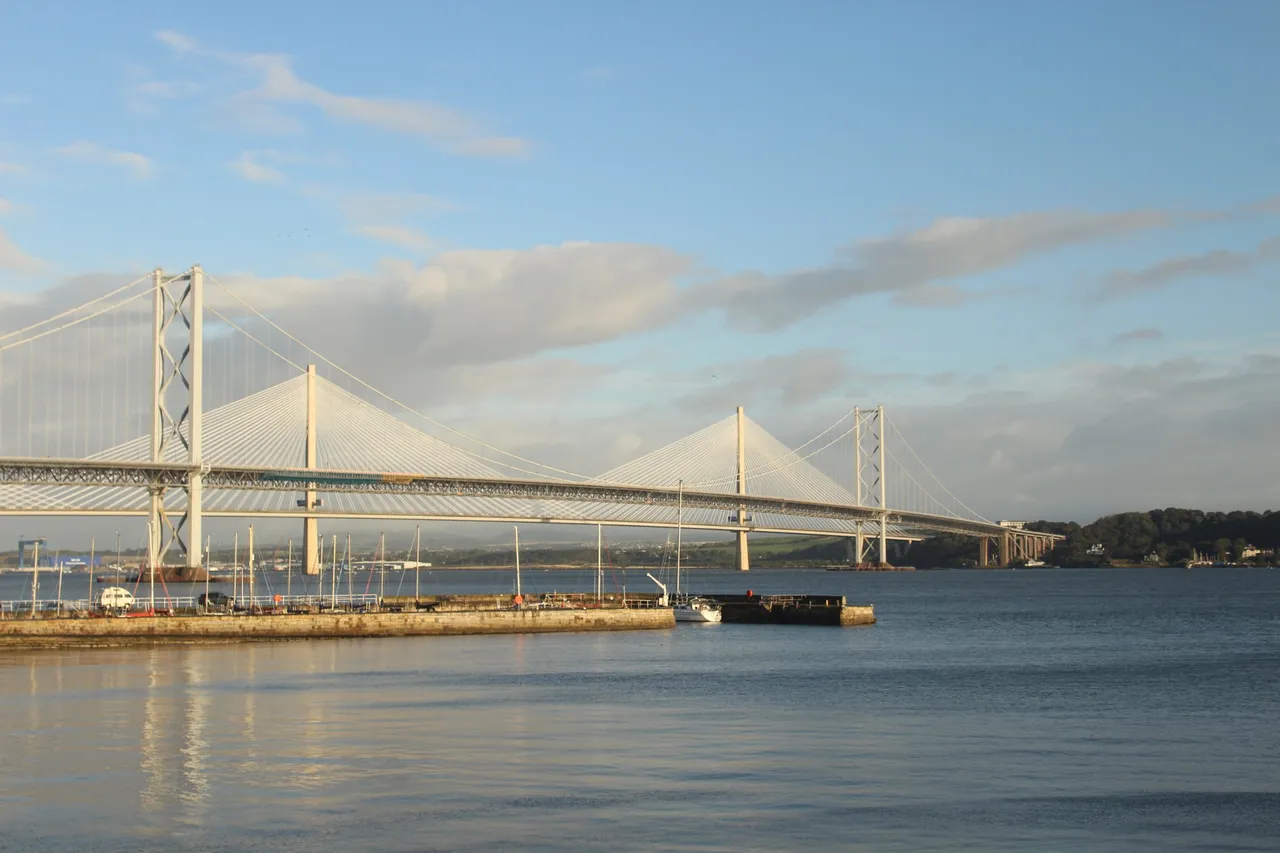
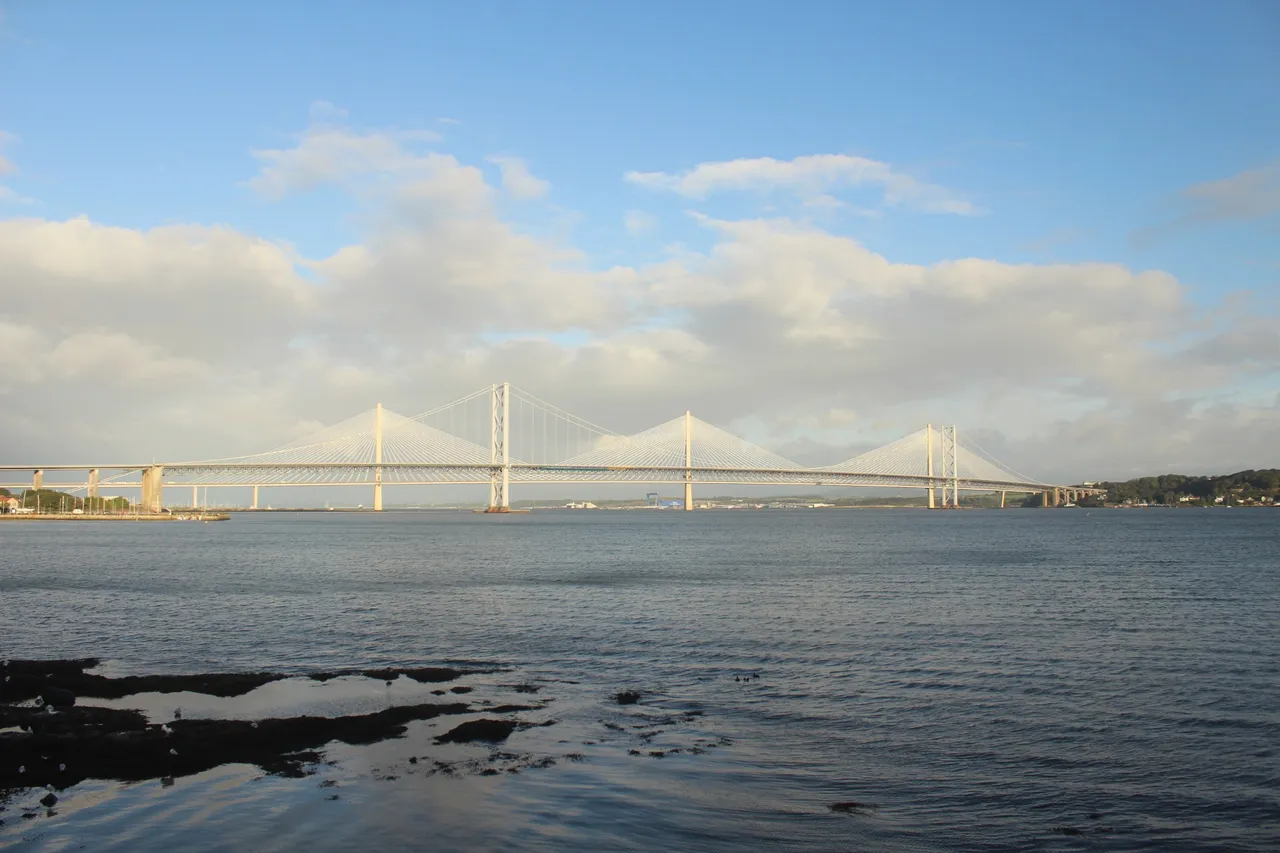
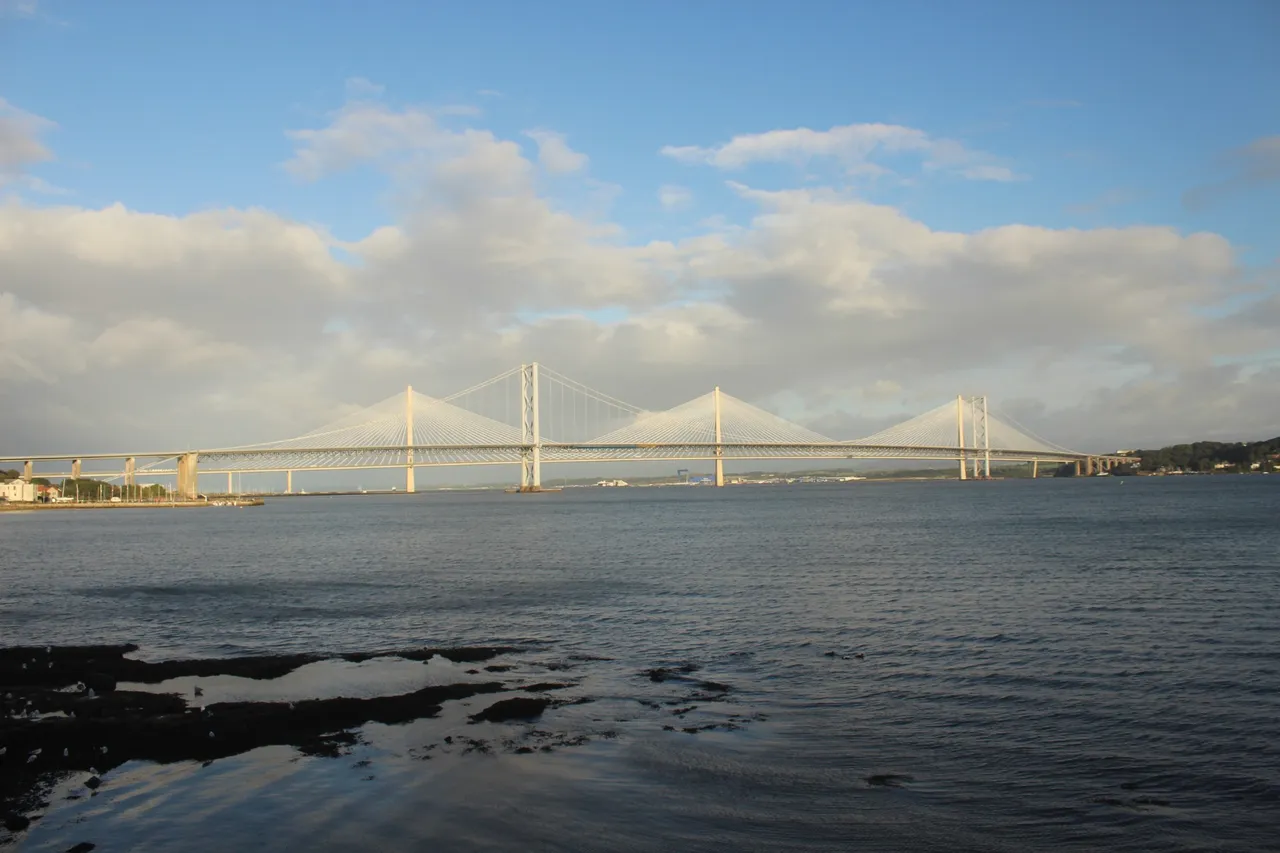


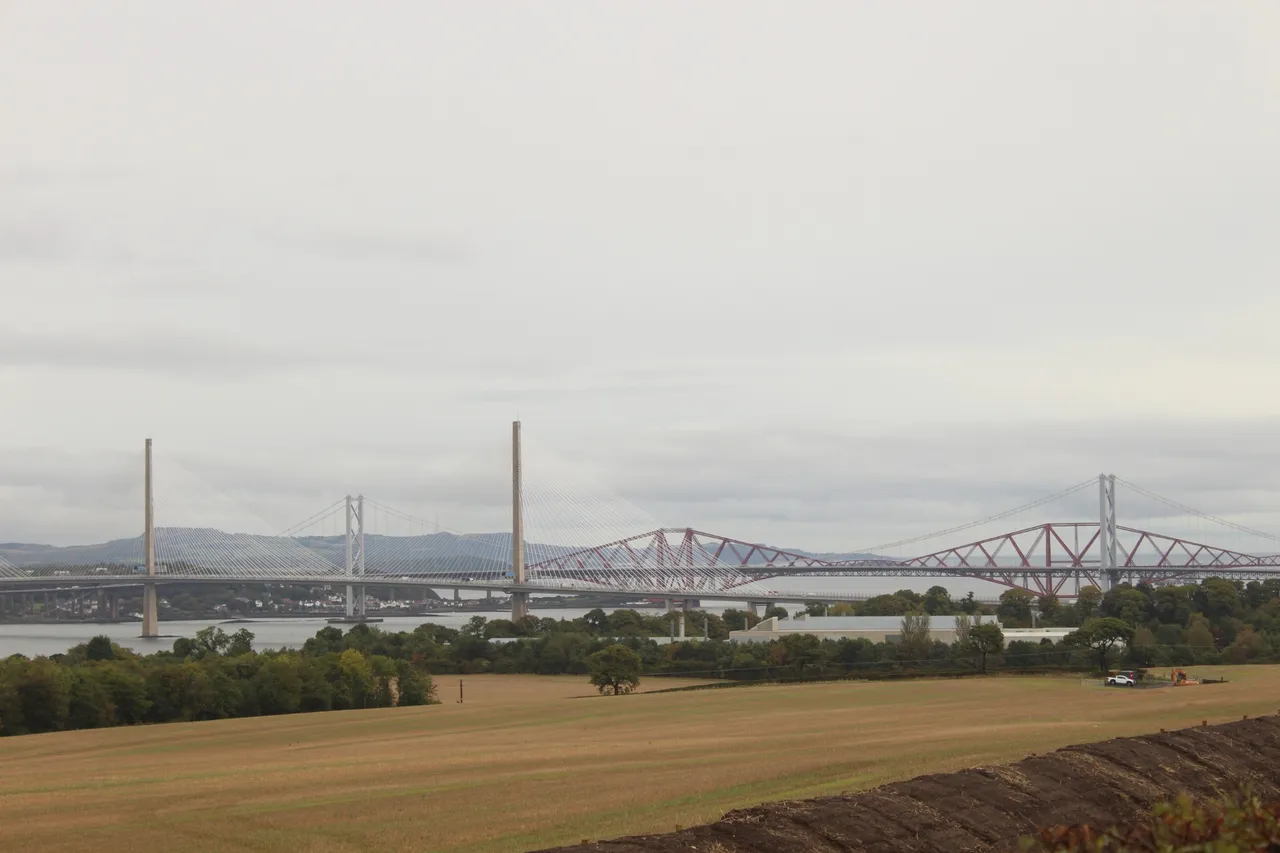
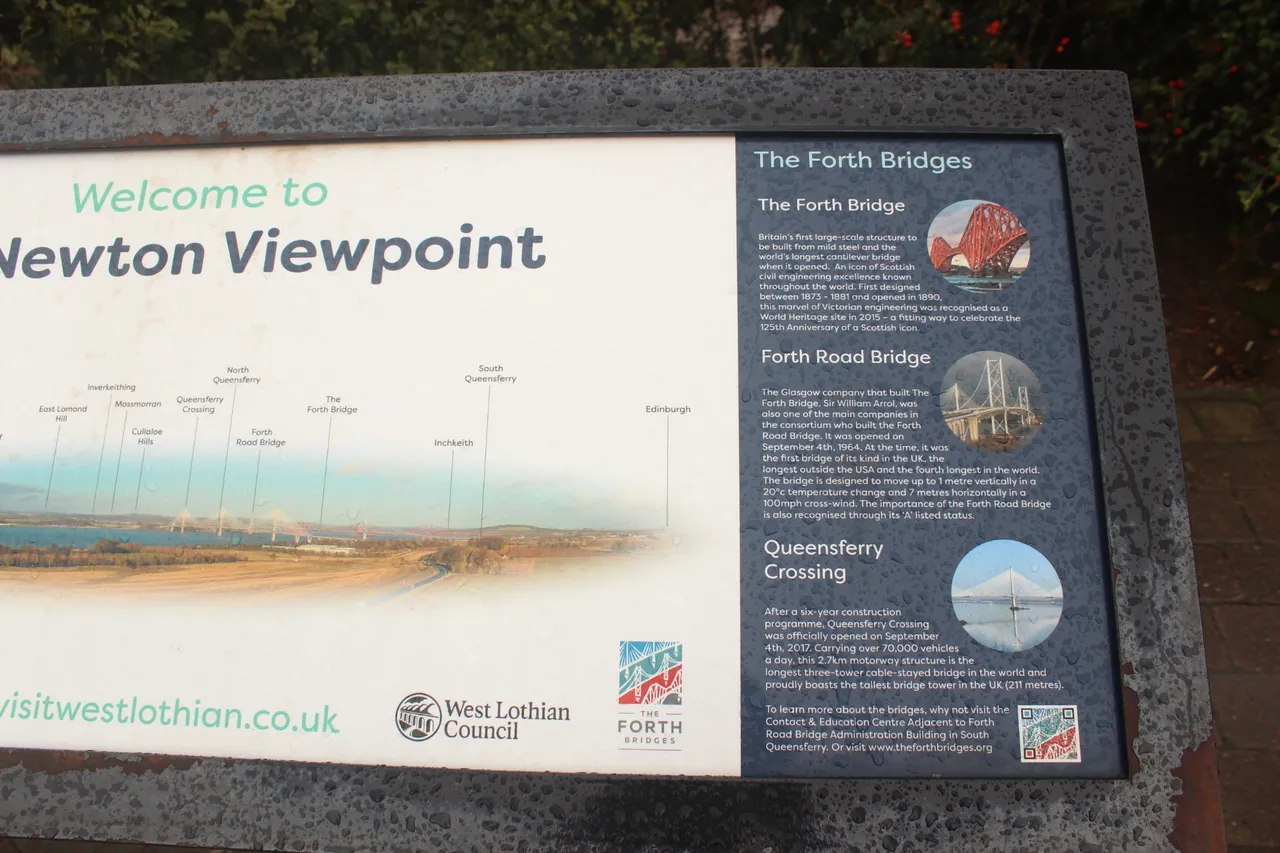
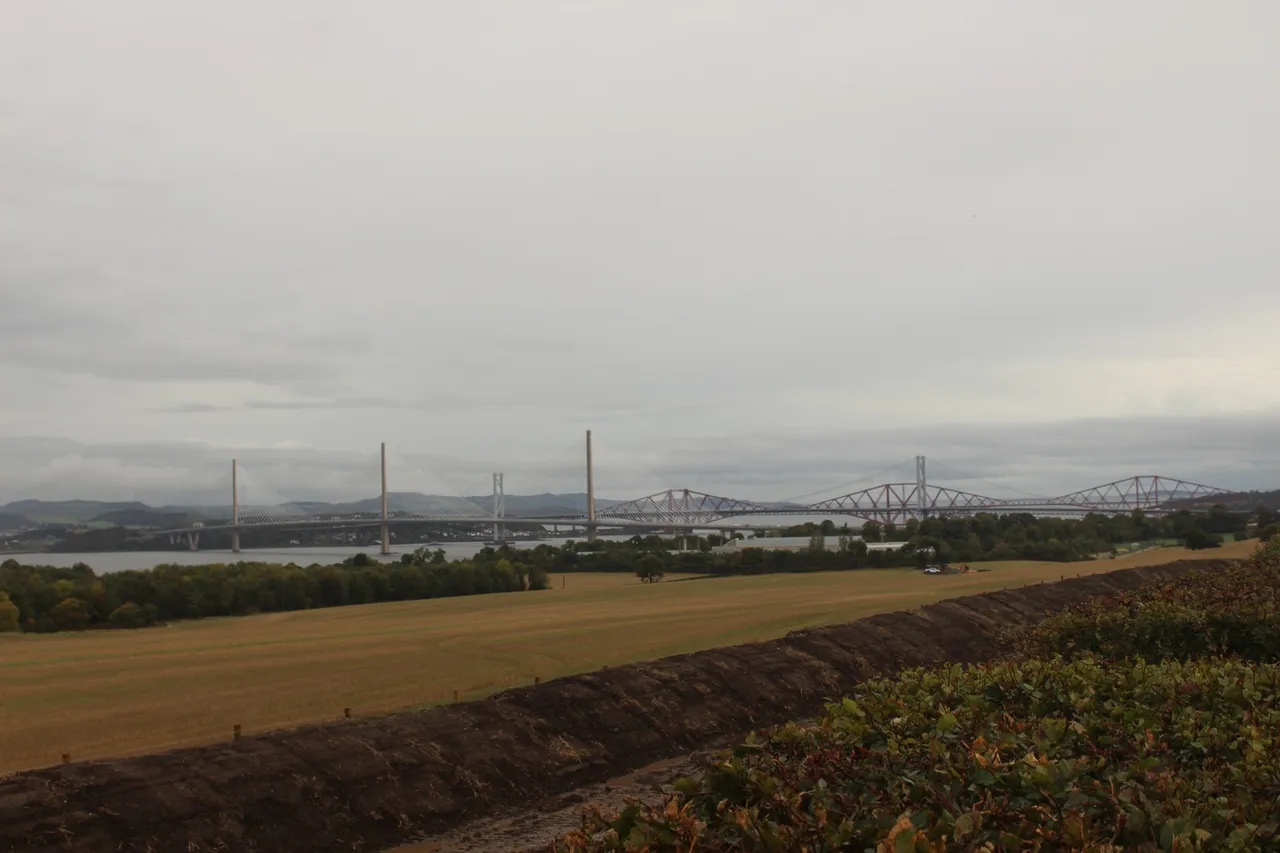
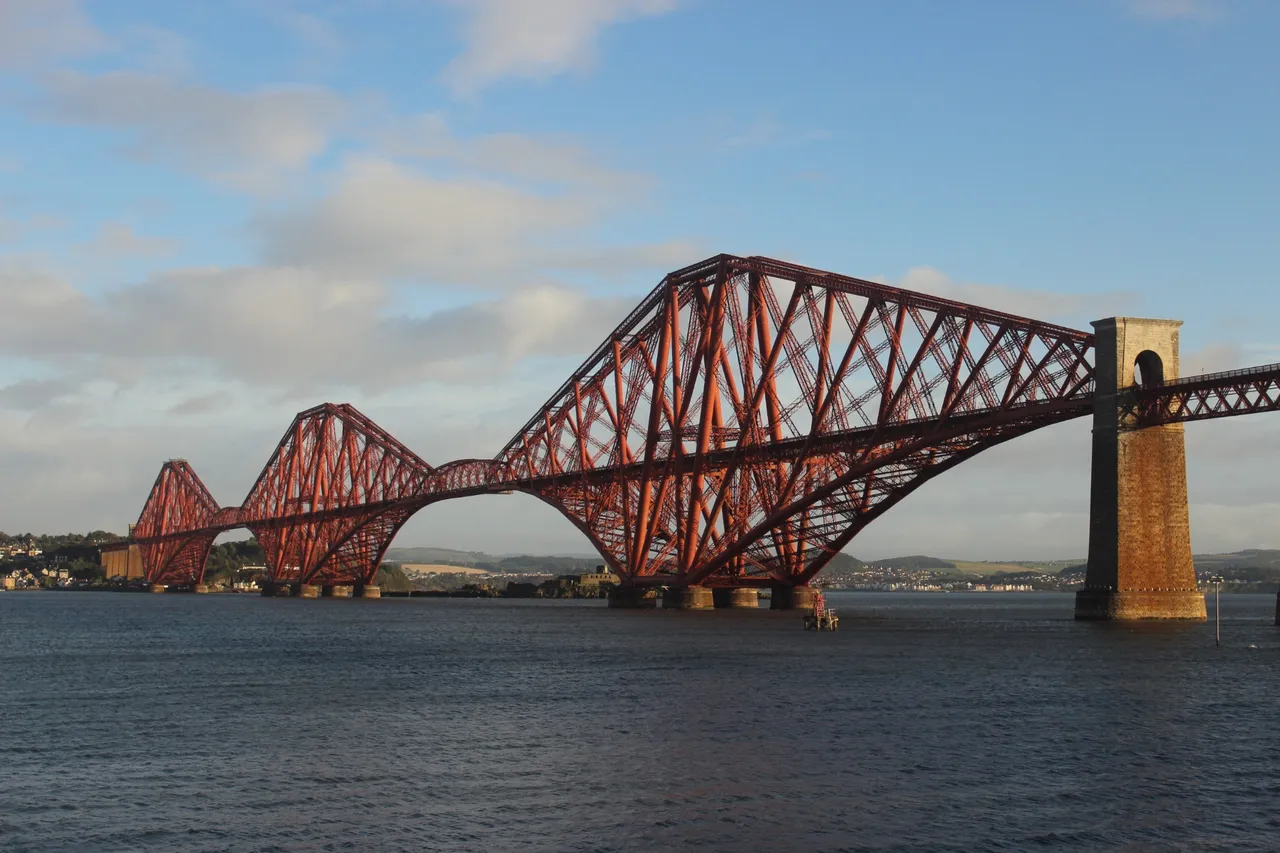
[ENG]
For me, the oldest bridge, the Forth Bridge, is the most interesting. Its red steel structure is so original and interesting that it has become one of the symbols of Scotland. Built in the years 1882-1889, at the time of its commissioning, the bridge had the longest span of 520 meters and it was only crossed by another bridge with a cantilever structure, which is located in Quebec, Canada. The total length of the bridge is almost 2 and a half kilometers, and the trains running on it move at an altitude of almost 50 meters above sea level. The structure of the bridge appears to be very massive and this is mainly due to the fact that a few years before the construction of the Forth Bridge in Scotland started over another bay, there was a huge disaster at the Tay. Then, during a storm, the railway bridge over Tay Bay collapsed under the weight of the train. As a result of that catastrophe, 75 people were killed, which must have had a huge impact on public opinion and on the constructors of subsequent bridges. It was then decided to build safer, more massive bridges - 54,000 tons of steel, 7 million rivets and 21,000 tons of cement were used to build it. All this made the Forth Bridge a unique engineering structure in the world, which proves its inclusion on the UNESCO World Heritage List.
[PL]
Dla mnie najciekawszy jest najstarszy most Forth Bridge. Jego stalowa czerwona konstrukcja jest na tyle oryginalna i ciekawa, że doczekał się miana jednego z symboli Szkocji. Budowany w latach 1882-1889 most w chwili oddania do użytkowania posiadał najdłuższe przęsło liczące 520 metrów i pokonał go dopiero inny most o konstrukcji wspornikowej, który znajduje się w Kanadzie w mieście Quebec. Łączna długość mostu to prawie 2 i pół kilometra, a pociągi jeżdżące po nim poruszają się na wysokości niemal 50 metrów nad poziomem morza. Konstrukcja mostu wydaje się bardzo masywna, a jest to spowodowane głównie tym, że kilka lat przed rozpoczęciem budowy mostu Forth Bridge w Szkocji nad inną zatoką doszło do ogromnej katastrofy nad Tay. Wówczas podczas sztormu pod wpływem ciężaru pociągu zawalił się most kolejowy nad zatoką Tay. W efekcie tamtej katastrowy zginęło 75 osób, co musiało wywrzeć potężny wpływ na opinie publiczną, oraz na konstruktorów kolejnych mostów. Zdecydowano się wówczas budować bezpieczniejsze, bardziej masywne mosty do jego budowy użyto 54 tysiące ton stali, 7 milionów nitów i 21000 ton cementu. To wszystko sprawiło, że Forth Bridge jest unikalną na skalę swiatowa konstrukcją inżynierską, co podwierdza wpisanie go na listę światowego dziedzictwa UNESCO.